edible oil refining machine
The edible oil refining machine is an industrial device used for purifying vegetable oils. It removes harmful substances and impurities from crude oil through multiple processes to produce first-grade edible oil that meets national food safety standards. This article introduces the operating steps and process flow.
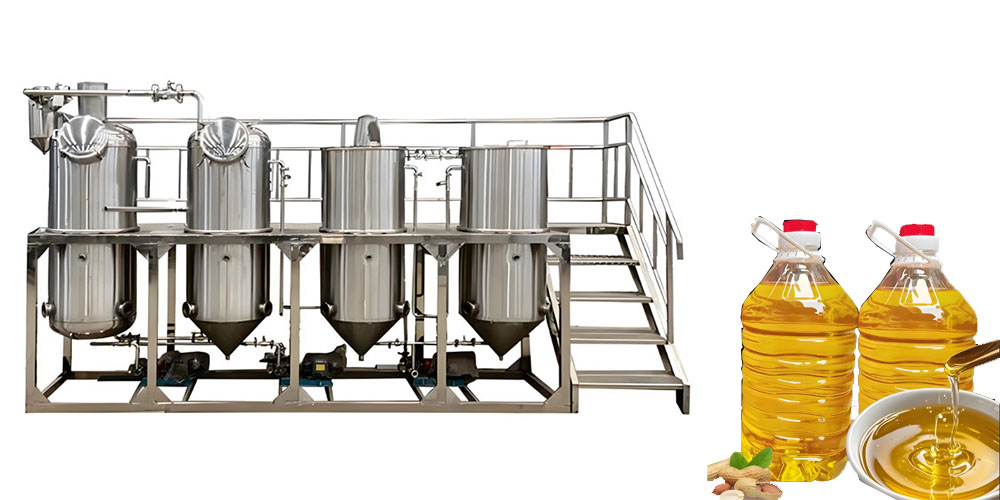
Table of Contents
- Application fields and raw material analysis of oil filters
- The working principle of edible oil refining equipment
- Scope of application of palm oil refining machine
- Process flow of refining equipment
- Classification of oil filters: physical refining vs traditional alkali refining
- Large-scale refining equipment: the difference between batch and continuous processes
- Types of oil filters: Choosing between edible oil and industrial oil
- Refining equipment sales: comprehensive recommendations
Application fields and raw material analysis of oil filters
- More than ten types of vegetable oilseeds, including rapeseed, soybean, flaxseed, tea seed, peanut, sunflower seed, olive oil, and palm oil.
- The refining process of animal fats and oils, such as lard and butter.
- Application scenarios of refining machines
- Large oil factory: Utilizing a fully continuous physical refining line, with a daily processing capacity exceeding 500 tons, producing first-grade edible oil.
- Small and medium-sized oil mills: Utilize intermittent refining units to achieve integrated operations of degumming, deacidification, and decolorization, ensuring that the finished oil meets the second-grade or higher standards.
- Specialty oil processing: Customized dewaxing and degreasing processes for high value-added oils such as rice bran oil and grape seed oil.
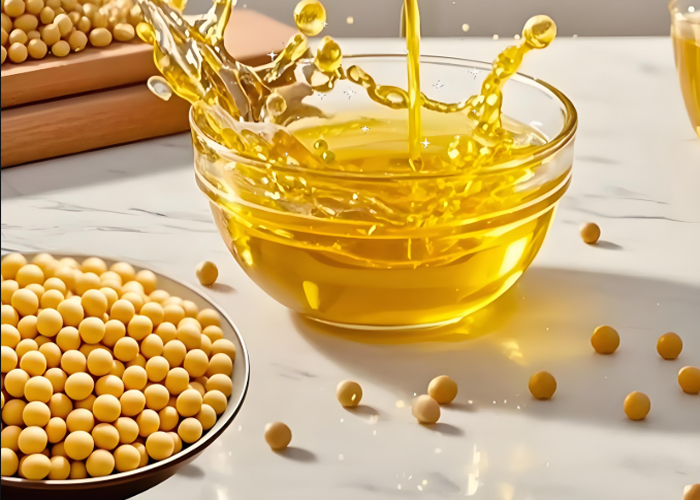

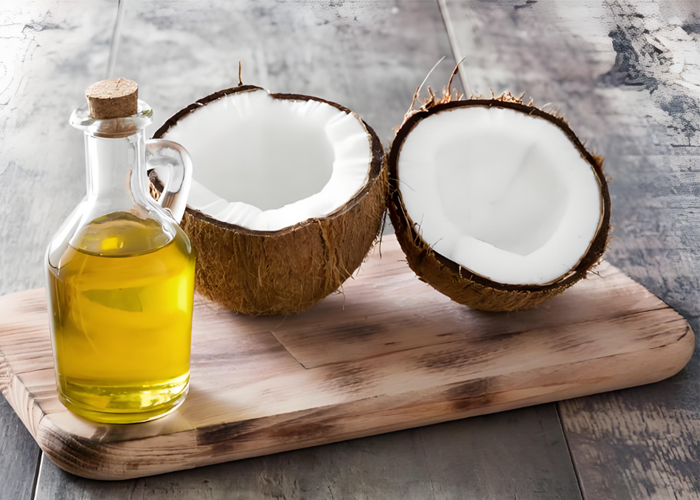

The working principle of edible oil refining equipment
edible oil refining machine can be divided into chemical refining and physical refining. In order to improve oil quality and reduce refining consumption, we generally use the physical refining method. The physical refining process of peanut oil is as follows: crude oil – heater – static mixer – acid reactor – multi effect mixer – heater – centrifugal mixer – water washing centrifuge – heater – vacuum dryer – clay mixer – decolorization – filtration – decolorization clear oil tank – gas separator – heat exchange – deodorization – heat exchange – finished oil.
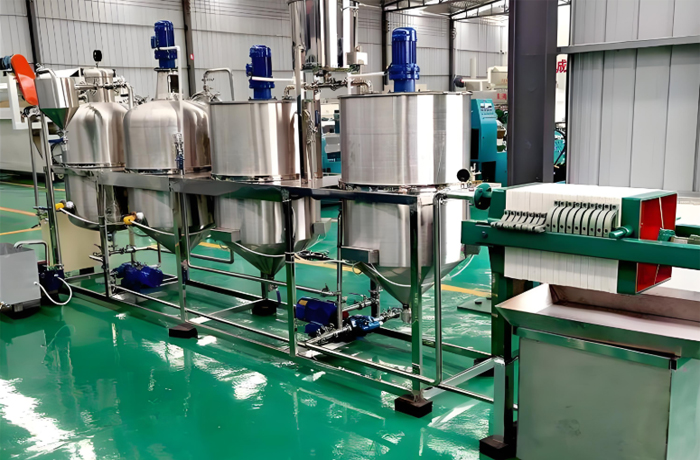
Scope of application of palm oil refining machine

The complete production line of edible oil refining equipment covers the entire production process from raw material pretreatment to refined oil storage and packaging. The production line adopts advanced process technology and automation control system, which can achieve efficient, stable, and continuous production, ensuring the dual improvement of oil quality and output.
Process flow of refining equipment
The edible oil filter utilizes five core processes: degumming, deacidification, decolorization, deodorization, and dewaxing (optional), to transform raw oil obtained through pressing or extraction into edible oil that meets national standards
- Degumming
- Principle: Leveraging the hydrophilic nature of phospholipids, colloidal substances are precipitated and separated through heating and hydration.
- Equipment: hydration pot, centrifuge.
- Effect: Remove colloidal impurities such as phospholipids and proteins to avoid precipitation during subsequent processing.
- Deacidification
- Traditional alkali refining method: Add sodium hydroxide to neutralize free fatty acids, generate soapstock, and then separate it.
- Advantages: Wide applicability and low cost.
- Disadvantages: High refining consumption (about 3%-5%), requiring supporting wastewater treatment facilities.
- Physical refining method: High-temperature steam directly strips free fatty acids without the need for chemical alkali solution.
- Advantages: low refining loss (about 1%-2%), no pollution, suitable for inferior crude oil.
- Equipment: Deacidification tower, steam injection device.
- decolorize
- Principle: Utilize activated clay or activated carbon to adsorb pigments, metal ions, and residual phospholipids.
- Equipment: decolorizing tower, plate and frame filter.
- Effect: Enhance oil transparency and improve flavor.
- deodorization
- Principle: Under high temperature (above 260℃) and high vacuum (3 mbar) conditions, odor substances are removed through steam agitation.
- Equipment: Combined deodorization tower, heat exchanger.
- Effect: Ensure the purity of the oil flavor and extend the shelf life.
- De-waxing (optional)
- Applicable scenarios: For high wax content oils such as tea seed oil and rice bran oil.
- Principle: After low-temperature crystallization, filter and remove the waxy substance.
- Effect: Improve the low-temperature stability of oils and fats, preventing turbidity.
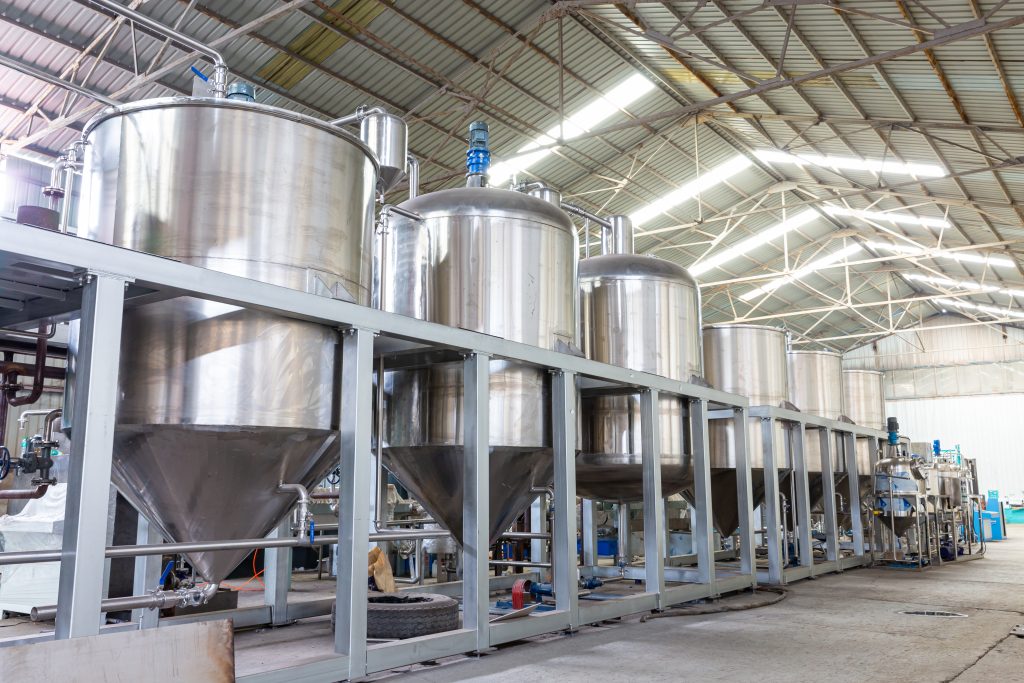
Classification of oil filters: physical refining vs traditional alkali refining
| Comparing dimensions | physical refining | Traditional alkali refining |
|---|---|---|
| principle | High-temperature steam stripping of free fatty acids | Alkali solution neutralizes free fatty acids |
| refining loss | 1%-2% | 3%-5% |
| environmentally | No sewage discharge | Necessary supporting sewage treatment facilities |
| Applicable scenarios | Large oil plants, scenarios with high environmental protection requirements | Small and medium-sized oil plants, cost-sensitive projects |
Large-scale refining equipment: the difference between batch and continuous processes
- Continuous refining machine
- Production mode: Realize fully automated continuous operation throughout the entire process, from raw material feeding, refining to finished product discharge, without requiring manual intervention, supporting 24-hour uninterrupted production.
- Efficiency advantage: Taking large-scale industrial oil refining as an example, continuous equipment can operate continuously for more than 45 days, requiring only external fuel (such as heavy oil or natural gas) for the initial startup. Subsequently, it utilizes its own exhaust gas to maintain combustion, significantly reducing fuel costs.
- Production capacity: The daily processing capacity can reach tens or even hundreds of tons, making it suitable for large-scale industrial production.
- Intermittent refining machine
- Production mode: Adopting a cyclic operation of “feeding – refining – cooling – slagging”, each batch of raw materials needs to complete the entire process of heating, reaction, cooling, and slagging independently.
- Efficiency limitations: Taking industrial oil refining as an example, each batch needs to be cooled for several hours until it reaches the temperature for slag discharge. The daily processing capacity is usually only 1-2 furnaces (approximately 10-20 tons), and the utilization rate of thermal energy is low, resulting in a significant waste of heat during the heating and cooling processes.
- Capacity scale: Suitable for small-scale or flexible production needs, but difficult to meet large-scale continuous production.
Types of oil filters: Choosing between edible oil and industrial oil
An oil filter is a device used to filter and purify oil liquids (such as edible oil, industrial lubricating oil, hydraulic oil, etc.). Its core function is to remove impurities, moisture, gases, and harmful substances from the oil, thereby enhancing the quality of the oil product. According to its working principle, application scenario, and structural characteristics, oil filters can be divided into the following main types:
- Mechanical filtration oil filter
- Principle: Intercept solid particles and impurities in oil through physical barriers such as filters, filter cartridges, or filter paper.
- characteristic:
- Simple structure, easy operation, and low cost.
- The filtration accuracy depends on the pore size of the filter material (usually 1-100 microns).
- Suitable for primary filtering or scenarios with low precision requirements.
- Common types:
- Plate and frame oil filter: composed of filter plate, filter frame, and filter cloth, it filters through hydraulic compression and is suitable for high viscosity oil.
- Vacuum oil filter (some models): Combining vacuum degassing and mechanical filtration, used to remove water and gas from oil.
- Centrifugal oil filter
- Principle: By generating centrifugal force through a high-speed rotating drum, impurities with different densities (such as moisture and metal particles) in the oil are separated.
- characteristic:
- No need for filter material, high filtration efficiency, and can work continuously.
- Suitable for handling large amounts of oil or oil with high water content.
- The filtering effect on small particles (such as<5 microns) is limited.
- Edible oil filter machine
- Function: Remove gum, pigments, free fatty acids, and mechanical impurities from crude oil, improve oil transparency and stability.
- Common types
- Plate and frame edible oil filter: used for small and medium-sized oil workshops, combined with filter cloth to filter crude oil.
- Centrifugal edible oil filter: It separates oil residue through centrifugal force and is suitable for preliminary purification of pressed oil.
- Vacuum oil filter (for edible oil): Combining vacuum deacidification and deodorization processes to produce first grade edible oil.


Refining equipment sales: comprehensive recommendations
The scope of use for an oil refining machine is incredibly broad and diverse. While its most common application is producing edible oil for the food industry, its role is just as critical in other major sectors. It is a key piece of equipment for creating clean feedstock for the biofuel industry. It is essential for producing the pure, neutral oils required by the cosmetics industry. It is also a vital tool for creating specialized oils for various industrial products.
At Fude Machinery, we understand this wide scope. We have the experience to design and build a refining solution for any of these applications, at any scale.
 Oil Press Equipment and Oil Refining Machinery for Sale – Start Your Oil Press Business
Oil Press Equipment and Oil Refining Machinery for Sale – Start Your Oil Press Business